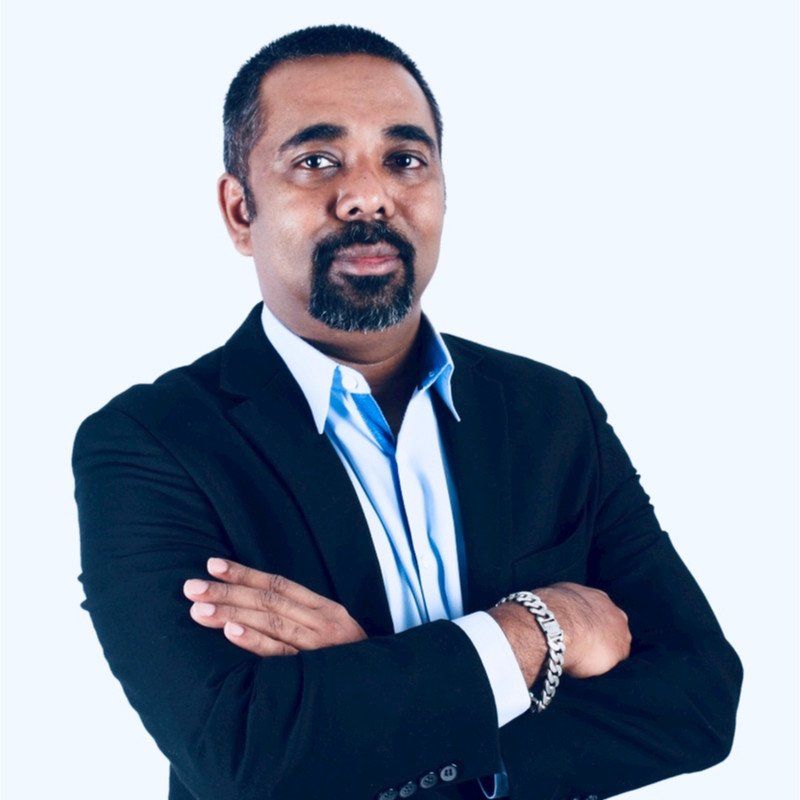Transformation During Turbulent Times

The third and fourth parts of this series covered the topics of Theory of Business and the Spirit of Performance, two key areas of focus that requires an executive to effectively organise its business to focus on delivering value to its customers.
It also concluded that executives need to lead an organisation by clearly communicating what the theory of business is and emphasising the spirit of performance, with a priority on results that impact the customers. This should all be done while simultaneously establishing an organisation that is structured by teams of managers that ensures the quality of the current products and services are delivered and by teams of internal ‘entrepreneurs’ or ‘innovators’ that are given the time and resources to focus on the future through innovation and improvement.
In times when change or transformation becomes a necessity, the internal aspects that impede managers, entrepreneurs and innovators from changing or transforming need to be thoroughly understood. This article aims to explore the constraints that exist in an organisation and how it can be achieved by revisiting the theory of business and spirit of performance.
Turbulent times in 2020
Over centuries the world has experienced several occasions of turbulent times. This is often related to major events that altered the course of a nation, its economy, and leadership, therefore changing the global economic outlook.
Events such as the World Wars, 1920s Great Depression in the USA, the OPEC crisis in the 1970s, and the Financial Crises in the 1990s and 2000s are examples where organisations and societies were significantly affected.
At present, we are also facing the COVID-19 pandemic, which has resulted in lockdowns across the world. Borders of countries were closed and still remain closed, severely affecting industries such as manufacturing, trade and commerce, construction, travel and tourism.
Major stock markets collapsed in February 2020 and have yet to recover to its bullish state till today. Countries are facing negative growth, businesses are forced to lay off its workforce, economies are contracting and SME (small and medium enterprise) ecosystems are failing due to the forced lockdowns imposed by governments to prevent the impact of COVID19.
Resilient countries, economies and organisations are forced to transform their way of business and operations in order to remain relevant and keep the business revenue churning. However, this has not been easy, especially for organisations that aren’t used to transformation or changing in turbulent times.
In Malaysia, we have heard and seen reports of businesses shutting down due to the loss of revenue and inability to reinvent themselves during turbulent times like this. Businesses in the tourism sectors as well as the SMEs have been detrimentally impacted by the pandemic and almost 2.4 million employees have lost their employment.
Businesses that had established good communication, Internet and digital infrastructure had to adopt the new way of operating – Working Remotely from Home. Many organisations had to ensure that operations could continue effectively with teams working remotely.
These are examples of the many changes that have been put in place in the space of four to six weeks, and will continue to evolve as time goes on. In Malaysia, many are experiencing this as the country goes into its first week of lockdown recovery.
Organisational Constraints

THE FOUR CONSTRAINTS OF TRANSFORMATION
The first two tasks an executive needs to do when faced with the need to change during turbulent times are knowing ‘what needs to be done now?’ and questioning if ‘is it right for the organisation?’. These two tasks are crucial for a leader and the organisation, in establishing the knowledge base that’s required for transformation.
Ignoring the need to answer these questions will only lead to leaders and organisations making wrong decisions during a negative growth period. Once the required knowledge base is established, the necessary action plans need to be executed, and the need for change and the management of change comes into play. Often these constraints, if not addressed, will also lead to the failure in executing the action plan and the goals of transformation.
Personal experiences and research on organisational transformation by Roshan Thiran highlighted that almost every transformation agenda will commonly face four constraints. These constraints are:
- Business Model – Organisations that maintain a business model that is not adaptable to current needs and times will ultimately fail. Numerous examples and case studies such as AirAsia, Grab, Carsome, Uber, Netflix etc. have been written and shared over the years.
- Alignment – A key success factor for transformation is clarity of communication. Thereafter, the leadership of the organisation should focus and build its strategy around their customers and address the problems that they have. An executive that has learned and practices good management skills will be effective in aligning the organisation towards the vision, mission and strategy for transformation.
- Systems and Structure – An organisation with its leadership defining a clear focus will establish a structure to ensure “what needs to be done now?” is effectively executed. Additionally, effort should also be given to establishing processes that drives performance. Organisations not spend time creating structures and processes that drive the behaviours and performance, we will continually lament the actions of its employees and resources.
- Culture – “An organisation’s culture is not about words at all. It’s about behaviour and consequences. It’s about every single individual who manages people knowing that his or her key role is that of chief values officer,” – the late Jack Welch,
An executive’s main task is to deliver the results. Financial and business objectives along with a performing workforce are the key tasks that an executive need to execute. The output of these tasks in combination will reflect the organisational results. In turbulent times, these results matter.
The first two tasks an executive needs to do when faced with the need to change during turbulent times are knowing ‘what needs to be done now?’ and questioning if ‘is it right for the organisation?’.
As Peter Drucker eluded to in his book, executives assuming that the future is an extension of the present will not result in the necessary change that will lead an organisation out from a challenging economic or business climate.
Taking the Theory of Business and Spirit of Performance to heart, executives are recommended to adopt concepts such as 'management by objectives' and 'management by means' to direct employees and resources toward achieving specific outcomes that enable the organisation to perform efficiently and effectively during a challenging period.
- Management by objectives (mbo) is a method whereby managers and employees define goals for every department, project and person to monitor performance.
- Management by means (mbm) is a method focuses attention on the methods and processes used to achieve goals, key performance indicators and deliverables.
In addition to these concepts, Peter Drucker has also advocated four key tests that need to be incorporated in the action plans to bring about the change. These tests are activities related to abandonment, continuous improvement, innovation and decisions, or simply abbreviated as the A.C.I.D.© test for transformation.
A.C.I.D.© Test for Transformation
The management science of Peter Drucker always emphasised learning and acquiring skills and knowledge that can be put into practice. It is the practice that makes an executive effective. Accordingly, the need for change and going through the questions 'what needs to be done now?' and 's it right for the organisation?' are practices that an executive needs to adopt, along with testing the organisation on the following:
1. Abandonment
This test is to direct the executives to focus on areas that deliver results and have opportunities of growth. Empirically, there are 20% of the products or services that give 80% of the revenue and growth. However, organisations often put in substantial effort and resources into the remaining 80% of the products and services that may only contribute 20% towards revenue and growth. The idea of abandonment here is to identify these categories of products and services and thoroughly evaluate if they do still provide value to the customers? Or do they still offer a degree of viability at present or in the future? 
Executives need to assess if these products or services realistically fit in a negative growth period and if the organisation should continue to provide resources and finance its existence. Incidentally, focus and abandonment are two sides of the same coin. Without the will to act on abandonment, energy, efforts, resources and finances will be wasted protecting what was needed yesterday and ignoring the needs of today and tomorrow. With abandonment, a new business model can be developed.
2. Continuous Improvement
This is one of the most important tests an executive or managers will need to execute in their jobs. It is not only a test on productivity, but a test on all the input variables against the expected output for the products and services that are on offer.
As the input variables are diversified and the outputs are always linked to the value creation for the customer, continuous improvement can be considered one of the hardest tests to succeed in. To begin with, improvements can’t be achieved without any measurements. Without measurements, organisations will always end up estimating based on averages and ignoring the variations that happen at all inputs or outputs, thus not having control desired outcome as expected by the customers. Today, continuous improvement is made popular by the Japanese term Kaizen.
However, pioneering work by Frederic Taylor in the 1900s on time and motion study enabled the application of engineering principles to tasks and processes therefore resulting in the increase of productivity and hence meeting the ever increasing demands of the customers. With continuous improvements, focus can be set on doing the right things and getting them done right (possibly right the first time). An organisation, therefore will be able to implement the most suitable and flexible systems and structure as well as create a culture that is focus driven and productive and overcoming these constraints.
3. Innovation
Threats that an organisation faces during its turbulent times should be converted into an opportunity, focusing on the present and developing for the future.
If continuous improvement is focusing on existing products and processes, innovation is focusing on developing new products and processes. Both have a common task of solving a customer’s problem.
Threats that an organisation faces during its turbulent times should be converted into an opportunity, focusing on the present and developing for the future. The true test of innovation is the test on the practice of the use of data, analytics, design thinking and hard work. It is a skill that can be learnt, practiced and applied.
Innovation is also a follow through test after abandonment. As abandonment is a result of products and services that don't create value to the customers, innovation is the test on identifying opportunities to solve customers’ problems with technology or other means. With innovation that creates value, customers will be the first to abandon older and non-value creating products or services.
Organisations that do not practice abandonment will find it hard to innovate, as innovation is also to disrupt one’s own established processes and replacing it with a new process. Therefore, innovation requires its own system, structure and processes, and managed independently from the existing portfolio by an autonomous team and function. In turn, the organisation develops the culture of innovation.
4. Decision Making
The test of decision making is truly a test on understanding if a decision has to be made on a generic situation or a truly unique situation. Decisions related to generic situations are often decisions to solve problems or tactical, whereas decisions made for a truly unique situation has to be strategic.
A strategic decision has to overcome the constraint of alignment. Strategic decisions have to address the unique situation and create an impact from its execution. Such decisions are made at the highest level of the organisations and have to be conceptually simple, easily understood and can be communicated clearly. Good decisions come with clear objectives, scope of impact or the boundary where its effects measured and acted upon as feedback.
It is also done with consensus and the management team acknowledging that it is right for the organisation. Without it, alignment can never be achieved. The entire effort of the decision is the work that is put into executing the decision into results that creates an impact.
Concluding Thoughts
To quote Peter Drucker:
Practices, though seemingly humdrum, can always be practiced, whatever a person's aptitudes, personality, or attitudes. Practices require no genius – only application. They are things to do rather than to talk about. Organisations need to start by thinking through what should be strengthened and built. They do not start by trying to save money.They start by trying to build performance.
All of these are practices. They can be taught, leant, applied and practiced until perfection is achieved.
The science of the effective executive is essentially combining the Theory of Business and The Spirit of Performance, understanding the four constraints that an organisation has and conducting the A.C.I.D.© test in order to achieve the best possible transformation.
- Abandonment is about achieving more with less, for example by using the 80-20 rule.
- Continuous Improvement is about performance of existing products and services for the customer.
- Innovation is about development of a new product or service (nowadays with the aid of technology) to solve a customer’s problem and create value.
- Decision making is essentially about execution, execution and execution.
In turbulent times, these results matter.
Business
Tags: Growth
Arul is currently an independent consultant working on improving the component level supply chain for a popular electric vehicle brand and also enabling the disruption of delivery services with cloud based technology solutions. He formerly was with GEODIS as the regional director of transformation and as the MD of GEODIS Malaysia. In GEODIS, he executed regional transformation initiatives with the Asia Pacific team to leapfrog disruption in the supply chain industry by creating customer value proposition, reliable services and providing accurate information to customers. He has driven transformation initiatives for government services and also assisted various Malaysian and Multi-National Organisations using the Lean Six Sigma methodology.





